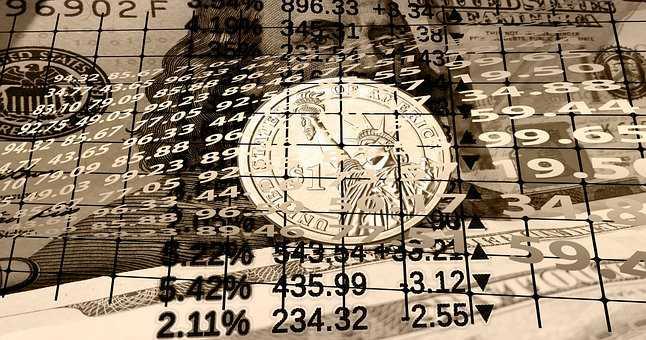Recessions: 10 Facts You Must Know
Curated from: kiplinger.com
Ideas, facts & insights covering these topics:
11 ideas
·6.62K reads
29
Explore the World's Best Ideas
Join today and uncover 100+ curated journeys from 50+ topics. Unlock access to our mobile app with extensive features.
Understanding recessions are vital
Recessions are part of the fabric of a dynamic economy. The average investor fears recessions because they mean lower home prices, lower stock prices, and less or no work.
Several things can cause, or worsen, a recession — soaring interest rates, or ill-conceived legislation. If you understand recessions, you will have many opportunities to look forward to when the recession ends.
139
953 reads
Naming a recession
Recessions are really "depressions," but the term "depression" seems too terrifying. After the Great Depression, economists began to use the word "recession" instead.
The 2007-09 recession involved a financial crisis, high unemployment, and falling prices, and was named the Great Recession. Our current recession is still without a name.
130
760 reads
An official recession
A standard measurement for a recession is two-quarters of consecutive GDP contraction. But the official arbiter of recessions and recoveries, the Business Cycle Dating Committee of the National Bureau of Economic Research (NBER), prefers domestic production and employment indicators instead. Other signs of the recession include:
- Declines in real (inflation adjusted) manufacturing, wholesale-retail trade sales, and industrial production.
- Extended declines in production, employment, real income, and other indicators.
132
619 reads
Time-frame of a typical recession
The average length of recessions is 17.5 months. The long-term average covers the 1873 recession that lasted 65 months. It also includes the Great Depression, which lasted 43 months.
Since WWII, recessions have become less harsh, lasting an average of 11.1 months. In part, it is because bank failures do not mean that you lose your life savings.
138
571 reads
Recurrence of recessions
Since 1857, a recession occurred about every three-and-a-quarter years. The government used to think recessions should work themselves out.
Since WWII, the average between recessions is nearly five years. The last economic expansion, starting at the end of the Great Recession, lasted 128 months, which means we were overdue for an economic retraction.
127
520 reads
The harshest recession
The recession of 1873 was known as the Great Depression until the 1929 recession started.
The recession of 1873 started with the failure of Jay Cooke & Company, a major bank. It caused knock-on effects of bank failures across the country and the collapse of a bubble in railroad stocks. The recession ended in 1877.
131
502 reads
The worst effect of a recession
Losing your primary source of income is the worst effect since jobs are increasingly hard to find in a recession.
That is why it's essential to have a few months' salary in cash as an emergency fund.
139
525 reads
The best time to buy stocks
Historically, the best time to buy stocks is when the NBER announces the start of a recession.
The NBER takes at least six months to determine if a recession has started. The average post-WWII recession lasts 11.1 months. By the time the bureau announces a recession, it is nearly over. Often investors are quicker to spot the beginning of recovery long before the NBER does.
156
596 reads
Spending your money
The best thing to do with your money during a recession is to pay off your credit card debt.
Paying off a credit card that charges 18% interest is equivalent to getting an 18% return on investment. You may not get that from most other investments during a recession.
141
553 reads
Early warning signs of a recession
An inverted yield curve is a more solid predictor of economic downturns than the stock market, consumer confidence, or leading economic indicators index.
An inverted yield curve is when short-term government securities, such as the three-month Treasury bill, yield more than a 10-year Treasury bond. It shows that bond traders expect weaker growth in the future.
145
514 reads
The Federal Reserve
The Federal Reserve does not want to start a recession because part of its dual mandate is to keep the economy healthy. But, the Fed's dual mandate also includes keeping inflation low. A cure for rising inflation is higher interest rates, which slows the economy.
For example, in 1981, the Fed raised interest rates so high that three-month T-bills yielded more than 15%. It did end inflation at the price of a short and sharp recession.
130
507 reads
IDEAS CURATED BY
Aniyah J.'s ideas are part of this journey:
Learn more about moneyandinvestments with this collection
Understanding the basics of blockchain technology
The benefits and challenges of using blockchain
The future of blockchain technology
Related collections
Similar ideas
6 ideas
7 ideas
How Money Became the Measure of Everything
theatlantic.com
9 ideas
Economic Indicators: A Beginner's Guide
thoughtco.com
Read & Learn
20x Faster
without
deepstash
with
deepstash
with
deepstash
Personalized microlearning
—
100+ Learning Journeys
—
Access to 200,000+ ideas
—
Access to the mobile app
—
Unlimited idea saving
—
—
Unlimited history
—
—
Unlimited listening to ideas
—
—
Downloading & offline access
—
—
Supercharge your mind with one idea per day
Enter your email and spend 1 minute every day to learn something new.
I agree to receive email updates

